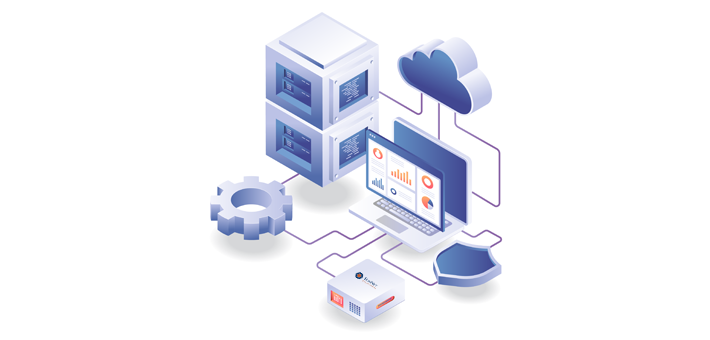Shell Read Case Study
"I love the fact that I can access years’ worth of information in seconds! Great job."
"I love the fact that I can access years’ worth of information in seconds! Great job."
"It's a real benefit for all our associates to be able to access the same reports regardless of their location."
SunNet Solutions Corporation
P.O. Box 22571
Houston, TX 77227
Phone: 713-783-8886
Are you ready to revolutionize your business and achieve new levels of scalability, flexibility, and agility? In today's rapidly evolving digital landscape, businesses need to adapt quickly to stay competitive. How to harness advanced technology for strategic business advantage is one of the top tasks for thought business leaders.
Embracing microservices architecture has been the answer to many businesses. What exactly are microservices? In simple terms, microservices represent an architectural approach where software applications are built as a collection of small, independent services that work together to create a larger and more complex system. Each service focuses on a specific business capability and can be developed, deployed, and scaled independently of the others. This modular approach allows for greater flexibility, scalability, and resilience in software development, giving you a competitive edge in the market.
In this blog post, we will go more in depth on topic of microservices, exploring its principles, benefits, and uncovering why it has become a favored choice for building modern, scalable applications.

Let’s try to paint a better picture of exactly what microservices is and how it compares to the traditional monolithic approach. Imagine you're building a house. Instead of constructing the entire house at once, you divide it into smaller parts and hire different teams to work on each part. One team focuses on the foundation, another on the walls, another on the plumbing, and so on. Microservices are like those specialized teams working on specific parts of the house. In the context of software, they are small, independent components that work together to create a larger application.
The concept of microservices has been around for more than a decade, however, it gained significant attention and traction around 2014 with the rise of cloud computing, DevOps practices, and the need for more scalable and flexible software development approaches. It emerged as an alternative architectural approach to address the limitations of monolithic architectures. Monolithic architectures are still widely used today for many applications. They offer simplicity and ease of development, as all the components reside within a single codebase. However, they can present challenges as the application grows larger and more complex. Scaling the application as a whole can be challenging, as all components need to be replicated even if only one part requires additional resources. Maintenance and updates can also be more difficult, as changes can have ripple effects throughout the application. The benefit of using microservices is that they can be developed, updated, and scaled independently. It's similar to how the plumbing team can work on their part of the house without needing to wait for the wall construction to be completed. This independence allows for faster development, easier maintenance, and the ability to adapt and improve individual components without affecting the entire application.
Organizations like Netflix and Amazon played a key role in popularizing microservices by sharing their success stories of using this architecture to achieve high scalability and rapid innovation. Since then, microservices have become widely adopted in the software industry. Microservices continue to evolve and influence modern software development practices, with ongoing advancements and refinements in technologies, tools, and best practices.
If you are planning to adopt Microservices, it's important to be aware of the pros and cons associated with this architectural approach. Here are some key points to consider:
| Pros | Cons |
|---|---|
| Scalability: Microservices allow for independent scaling of individual services, making it easier to handle varying workloads and optimize resource usage. (Contrast: Monolithic applications often require scaling the entire application even if only specific components require more resources.) | Increased Complexity: Microservices introduce additional complexity due to their distributed nature. Managing inter-service communication, data consistency, and deployment coordination can be more challenging. (Contrast: Monolithic applications are usually simpler to develop and maintain, as all components reside within a single codebase.) |
| Flexibility and Agility: Microservices enable faster development cycles, as each service can be developed, tested, and deployed independently. This promotes agility in adapting to changing requirements and allows for faster time-to-market. (Contrast: Monolithic applications often require modifying and redeploying the entire codebase for any changes or updates.) | Operational Overhead: Running and monitoring multiple services require more operational effort and infrastructure. Tasks like service discovery, load balancing, and fault tolerance become crucial in a microservices architecture. (Contrast: Monolithic applications have simpler operational requirements as all components are tightly coupled and run within a single environment.) |
| Technology Diversity: Microservices offer the freedom to use different technologies and programming languages for each service, allowing teams to select the most suitable tools for specific tasks. (Contrast: Monolithic applications typically use a single technology stack for the entire application.) | Learning Curve: Adopting microservices often requires a shift in mindset and expertise in distributed systems. Teams need to understand how to design, develop, and manage independent services effectively. (Contrast: Monolithic applications follow a more traditional development approach, which might be more familiar to developers.) |
In conclusion, adopting Microservices offers business leaders and IT leaders the opportunity to achieve greater agility, scalability, and innovation within their organizations. By embracing this architectural approach, businesses can accelerate development cycles, respond quickly to market demands, and foster collaboration among development teams. Microservices enable organizations to build scalable and resilient systems that can adapt to changing business needs, ultimately giving them a competitive edge in the market.

